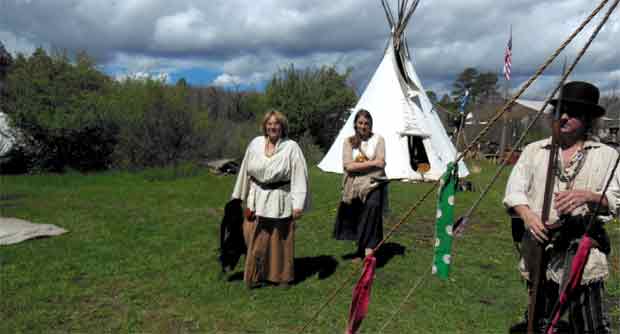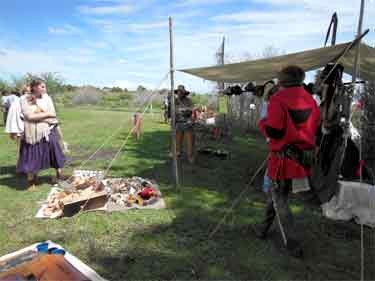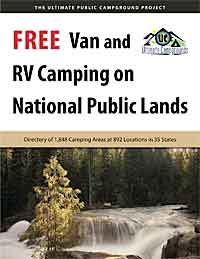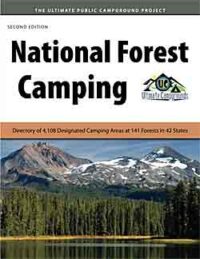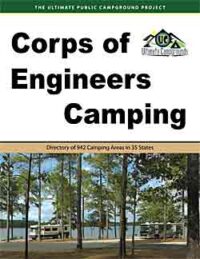Boondocking: Off-Grid Camping For Free
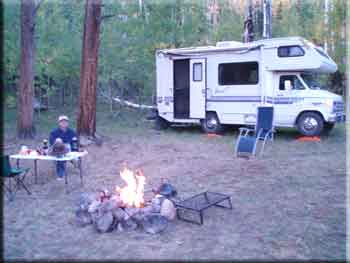 Boondocking (camping off-grid for free) sounds great, and it is. Many blogs, websites, and articles talk about free camping in places like Walmart or Cracker Barrel parking lots, rest areas, and truck stops. There are guides galore. These areas are fine for full-time RVers that are traveling and need a place to stop for the night, and on this page we offer numerous links to helpful resources.
Boondocking (camping off-grid for free) sounds great, and it is. Many blogs, websites, and articles talk about free camping in places like Walmart or Cracker Barrel parking lots, rest areas, and truck stops. There are guides galore. These areas are fine for full-time RVers that are traveling and need a place to stop for the night, and on this page we offer numerous links to helpful resources.
But as a man who’s lucky enough to live in the Colorado Rockies, I’m passionate about the recreational pursuit of wilderness camping. On all manner of unimproved roads, my little Class C motor home (shown here) has taken me away from civilization while providing warmth, shelter, and relative security. Let’s take a look at the differences between boondocking, dry camping, and dispersed camping, while we detail what to expect out there and what you’ll need along the way.
Boondocking, Dry Camping, and Dispersed Camping
“Dry camping is another term used to describe boondocking, but there is a slight distinction. While boondocking is camping without any hookups outside developed campgrounds, dry camping is simply camping without any hookups. The distinction is dry camping can take place at a developed campground.”¹ Dispersed camping refers to camping on public lands such as those managed by the BLM or Forest Service, outside of designated campgrounds and without any hookups or services.
Going to a KOA or private campground with all the facilities is not my idea of camping. It’s simply a change of location. I need to get away from civilization and out where I can see the stars and hear only the sounds of nature.
This is my favorite form of camping. No neighbors, plenty of firewood just lying around, and usually great views. I knew all the great places where I lived last, but I’m still scouting out all the the dispersed camp sites near my new home.
Most forest service roads have dispersed camping sites. These are often established by hunters, and you get used to finding remains of butchered animals. Hunters often leave behind primitive poop facilities, usually just a toilet seat on a wooden box. I don’t mind digging a hole and pooping in the woods, but my wife prefers to use the RV toilet.
I love not hearing anyone else’s generator, and not worrying if I’m bothering someone with mine.
A personal note about our own experiences: my wife Rachel and I have been camping companions since 1979. In order to best describe some of the situations we’ve faced and what we’ve learned, she is graciously allowing me to use her name in some of the following accounts. In return, she has included a footnote below (♥) for clarification.
Boondocking at the Mountain Man Rendezvous
We’ve also visited a couple of Mountain Man Rendezvous (shown in the picture at the top of the page). That’s a real taste of mountain man days with authentic costumes, trading for goods, hatchet-throwing contests, and muzzle-loading target challenges.
You must dress in period-accurate garb to be on site. They stick my camper in a separate area just for “tin teepees.”
These are usually held in very remote locations.
Be Prepared: You Are On Your Own
Because free campsites do not have amenities, you’ll need to come prepared. Whether you’re in a RV or a tent, there are a few things you’ll want in addition to normal campground supplies.
A picnic or outside table and some really comfy outdoor chairs. Enough trash bags for your entire stay. Enough fresh water. Firewood processing equipment.
You Are Your Own First Responder
Be prepared for emergencies and accidents. Make sure you have the equipment necessary to change a tire on your RV, get yourself out of a ditch, and treat serious outdoor accidents.
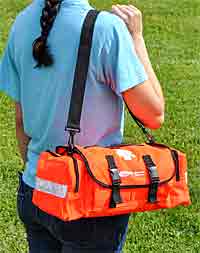
Bandaids, insect repellent, and antibiotic ointment might be enough for a developed campground, but for dispersed camping you need to be prepared for more serious injuries and accidents like broken bones, gunshot wounds, and animal attacks.
The First Aid Kit Emergency Response Trauma Bag has all the basic first-aid products plus it contains lifesaving equipment: In addition to the basic first-aid equipment, included in each bag is a carefully curated selection of emergency diagnostic tools like a blood pressure cuff and stethoscope to help assess a victim’s vitals, a CPR mask for safe administration of CPR during emergencies, EMT scissors to remove and cut through clothing so wounds can be accessed, a rescue blanket which helps to provide warmth to victims to help prevent shock, and glucose gel to use in the event of an insulin reaction.
Of course, it’s always a good idea to familiarize yourself with this equipment before you head out into the woods.
Be Prepared to Defend Yourself
My wife (♥ see note below) worries about bears because she did have one sneak up on her once, but I’m far more leery of nasty people. Even though it’s been suggested by forest rangers, I’ve never gotten a handgun. I do have several non-lethal methods of defense however.
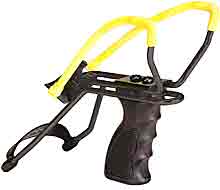
A Daisy Wrist Rocket has served me well. Over the years I’ve gotten to be a pretty good shot. Fortunately I’ve only needed to use it to encourage a herd of cows to move along.
The other self-defense things I have on hand is SABRE RED Home & Away Self-Defense Kit Home Defense Pepper Gel, a very sharp hatchet, and our walking sticks.
Keeping a clean campsite and storing food securely does a lot to deter bear visits. As unconventional as it sounds, peeing around the perimeter of your site also warns wild animals away.
Boondocking Rules
As with campgrounds there are a few rules to be followed.
- Pack out your trash. Don’t leave your fire pit full of burned cans and broken beer bottles.
- You can stay in a BLM site for a maximum of 14 days in a 30 day period and must move over three miles away for your next stay. You may only camp within a national forest or grassland for 28 days within a 60 day period.
- Your campsite should be at least 200′ from a water source.
- If you find a campsite with an established fire pit, use that fire pit rather than building another one.
- Obey posted fire restrictions and make sure your campfire is dead out when you leave. Use water. Do not bury the coals as they can remain hot enough to start a fire or cause a bad burn even after several days.
- If you poop outside, dig a a hole in a bare patch of organic soil at least 6″ deep. When you are done, cover the hole with dirt and a rock. Do not bury your toilet paper. Pack it out.
- Dog Waste: If they do their business within 200′ of a trail, bury it or pack it out. Do not leave a doo-doo bag on the trail or in the campsites. We do not employ servants to clean up after you and your pet.
- Avoid private property. When in doubt, move on.
Here’s YouTube® video from the Bureau Of Land Management about the basics of establishing a campsite in a primitive or undeveloped camping location:
And yet another good YouTube® video about boondocking from some folks that need to stay in cell range for work.
Lastly, one more good video about dispersed camping in Colorado.
Learn to Extend Your Resources
Learn the tricks to conserve your water, holding tanks, fuel, and battery power so you can extend your stay.
I can go a whole week on less than 20-gallons of water, but my wife needs a bit more. Early on, she used half our water supply doing the dishes from just one dinner. After a somewhat heated discussion about water conservation, I became the official dishwasher forever.
Conserving water and holding tanks capacity

We have plastic tubs in the sink. This allows us to catch our gray water before it goes into the holding tank and use it for something else, like putting out the campfire. We use paper plates a lot, and wipe everything else off very well with a paper towel before it goes into the dishwater. That way there’s very little food waste in the water.
This water is clean enough to water the plants in the area. Using a natural dish soap like Puracy natural dish soap is better for the environment than something like Dawn that has a host of harsh chemicals in it.
About the only thing that goes down the drain is toothpaste and some night time hand-washing water. The shower in our tiny camper is just too small to use, and I’ve never gotten around to creating an outside shower. I’ve seen some really clever ways on other sites about free standing outdoor showers with tankless water heaters that look like they work well.
Sponge baths are fine for a while, but at least once a week we visit a hot springs, public pool, truck stop, community gym, or a campground that allows us to take a shower for a fee.
Black water tanks
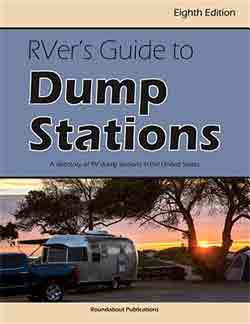
I do not recommend a portable black water tote tank. When these portable tanks are full they are extremely heavy and hard to move. The only alternative would be to fill it while it’s already in the bed of your truck or trunk. To fill would require an expensive electric macerating pump. The chances of a messy accident…
Yikes.
You can find dump stations on Free Roam here. When your onboard tanks are full, take your rig and go dump. The RVer’s Guide to Dump Stations is also a great resource.
Learn more about emptying your black tank remotely and using an external tank on this page: How to Empty Holding Tanks Remotely
Extending your fuel
Carry extra fuel if you can do so safely. Use your generator sparingly and depend more on solar panels to charge your battery(s). When your batteries need replacing, buy lithium/ion batteries that can store more power than lead/acid batteries. Also consider a Portable Power Center.
We generally run our generator for about 30 minutes in the morning to run the microwave oven and brew a pot of coffee. It also charges the battery. During that time, we also plug in every USB charged device we have so they charge too. If you have a tow vehicle, invest in DC power adapters for your phone and computers so you can charge them while you drive around.
I love cooking over the fire. It’s a fun challenge I enjoy. It also saves propane by not using the stove or hot water heater.
When it’s cold at night we just add an extra blanket and run the furnace only in the morning before we get out of bed. I also place my sweatshirt over the top of my head, but you could wear a hat.
Do not use a non-vented portable propane heater in your RV. Here’s why. They are OK for use in tents where there is a lot of ventilation, but not an enclosed RV.
Extending your battery bank charge
Having good batteries is essential to stress-free boondocking, but even the best batteries will run down. Having a means to charge your batteries will allow you to extend your stay.
See these pages of this website for solar and generator equipment: 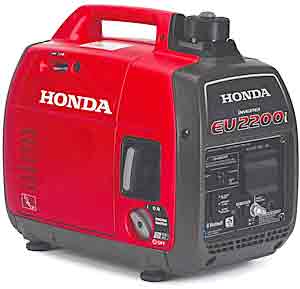
Running appliances like air-conditioners off-grid.
How to Quiet Down Your Generator
Generators or Portable Power Centers: Which One is Right for You?
Boondocking Resources
Get Good Maps
Good, detailed maps can help you find US Forest Service roads and campgrounds that are suitable to your RV or camping vehicle. We recommend the Benchmark Recreational Atlas maps.
America the Beautiful – The National Parks and Federal Recreational Lands Senior Pass
Also known as the geezer pass, if you are 62 or older you can buy this pass and your national park fees will be 1/2 price. They have a yearly pass and a lifetime pass.
Occasionally it’s nice to stay in a campground for their minimal amenities. They have fire rings, which can make a difference in forest fire-prone areas. When Level One Fire Restrictions are declared here, we can only have fires in these designated rings. Campgrounds also have water. Their bathrooms are usually pretty good, and some have dump stations.
Most National Parks and Campgrounds also have camp hosts that mediate difficulties between campers, and make sure everyone is following the rules.
National Forests, Parks, and Campgrounds are always in beautiful places. You don’t want to miss Yosemite.
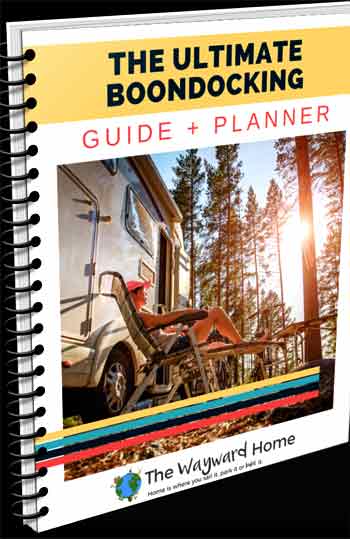 The Ultimate Boondocking Guide + Planner
The Ultimate Boondocking Guide + Planner
Ditch noisy and irritating campsites forever with the Ultimate Boondocking Guide and Planner.
You’ll learn how to use Motor Vehicle Use Maps and apps like iOverlander to find free, beautiful sites.
Plus, you’ll save tons of money not paying for expensive campgrounds and RV Parks.
- Instructions on how to find free camping using Motor Vehicle Use Maps and iOverlander
- Recommended boondocking gear checklist
- Fillable or printable PDFs to help you plan and track each boondocking campsite
- Finding water when boondocking
- Recommended boondocking membership programs
- Boondocking guides to help you find sites
- Information and resources on where and how to boondock
- Boondocking success tips
- A list of websites you can use to find free sites
- Where to go to the bathroom
- Where you can legally spend the night on private property
- A grocery checklist
- An equipment checklist
The Ultimate Boondocking Guide + Planner is a digital product which means you won’t get anything in the mail. You’ll have it in seconds downloaded to your computer, tablet, or phone. On sale for just $9.00*.
Apps and Websites that Help You Find Free Sites
Campendium website started in 2010 by full-time boondockers provides listings for free sites with honest reviews.
iOverlander app. is a non-profit project completely volunteer-run. Find over 25,000 sites in United States.
Free Campsites.net You can simply use your smart phone’s GPS to find camping near you, or even use their trip planner to plan your route from coast to coast.
Ultimate Public Campgrounds This information is available in 17 paperback books and includes over 38,000 locations across the United States. Work continues on the Project with information updated regularly.
RV Camping.com has a clickable map to home in on a particular state and find free boondocking campsites.
The most complete information source for camping, free parking, truck stops, propane, services, RV dumps, washes, and road hazards.
Boondockers Welcome (part of Harvest Hosts). 15% Off Discount Coupon Code: BWFRIENDS15. Must use the link here to access their site:
This book is a great directory of boondocking sites on public land. Books, and printed maps are handy when you are beyond cell service.
See more directories like this at the bottom of this page.
Reasons My Wife Doesn’t Like Dispersed Camping (Boondocking)
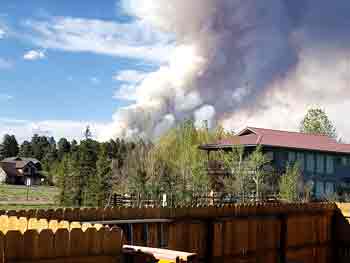
Everyone has their comfort level about how far from civilization they can be. Rachel (♥ see note below) likes the thought of having people around who can help in case of an emergency. I get that.
Fear of forest fires
If a forest fire starts near you, there is no campground host to let you know. Depending on the roads it’s possible to be trapped.
Today (May 17, 2022) a fire started near one of my favorite dispersed camping sites. It grew to 1000 acres by evening. This image is from my back deck. There are two directions to go to exit the area.
So, her fear is substantiated. Make sure you have more than one exit route.
Keep basic fire-fighting tools with you. Not that you can really do anything against these monster fires we have now, but if your campfire gets away from you you need to be able to suppress it fast. Keep water and a shovel handy. Always extinguish your fire dead-out before turning in for the night.
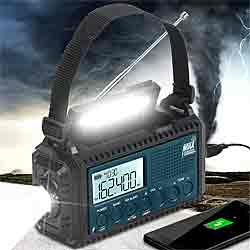
Solar and hand crank charging. Receives short-wave radio band. Can charge your cell phone too. Automatic turn on for weather alerts.
Fear of Wildlife
You’ll need to be able to defend yourself against predators. We do have bears, mountain lions, and wolves in Colorado, so it is a concern. Once she stepped out of our camper just before bed and watched the tail of a mountain lion slip into the bushes. Interestingly, that was in a campground. The scariest animal I’ve had to deal with while boondocking was a bull. BLM land is open range grazing for cows and a 1500 lb. bull is a scary animal.
Fear of Wackos
More than wild animals, she’s afraid of bad people. Some are hiding from the law. Most are just dumb. We’ve encountered gun-toting, highly-inebriated campers as well as some really questionable characters, although that always seems to happen in campgrounds.
When it comes to being out in the true wilderness, we’re usually far away from any neighbors and have never run into crazies in the woods. Still, it’s always smart to pay attention to your surroundings.
No showers or laundry
Dispersed camping is fine for a few days, but after that she wants a shower. Clothes will last about a week before needing to do laundry. We don’t have a posh Class-A RV with all the luxuries, but a Class-A really couldn’t get to some of the places we go anyway.
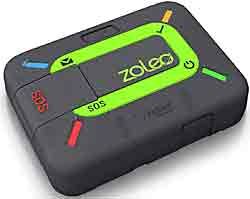
Frequently No Cell Service
Usually out of cell range, so you can’t call for help and no one can reach you if they need to. Nana needs to be able to hear the kids call if they need us.
For peace of mind, this Zoleo satellite communicator lets you send text messages from anywhere on earth. If something goes wrong, declaring an SOS ensures your SOS alert and GPS coordinates are sent to GEOS, their 24/7 emergency monitoring and dispatch partner. Other safety features include check-in to let others know you’re OK (using built-in device button or the ZOLEO app) and the ability to add your GPS coordinates to any message. Click on the image to see the details at Amazon.
Other pages on this website you will find helpful
Footnotes:
¹Wikipedia Jun 26, 2017
♥ My wife Rachel has been my camping companion since we met in 1979. While it may seem she’s a little less enthusiastic about dispersed camping than I am, rest assured that she is a badass and can handle any of the situations I’ve discussed. She has simply learned to set her boundaries.
More resources for finding campsites
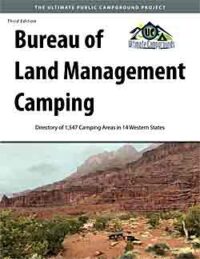
More resources for finding free campsites Details for each camping area include number of campsites, amenities, facilities, fees, reservation information, GPS coordinates, and more. Plus the new maps make it easier to find each camping area. The 14 states include: Alaska • Arizona • California • Colorado • Idaho • Montana • Nevada • New Mexico • North Dakota • Oregon • South Dakota • Utah • Washington • and Wyoming.


